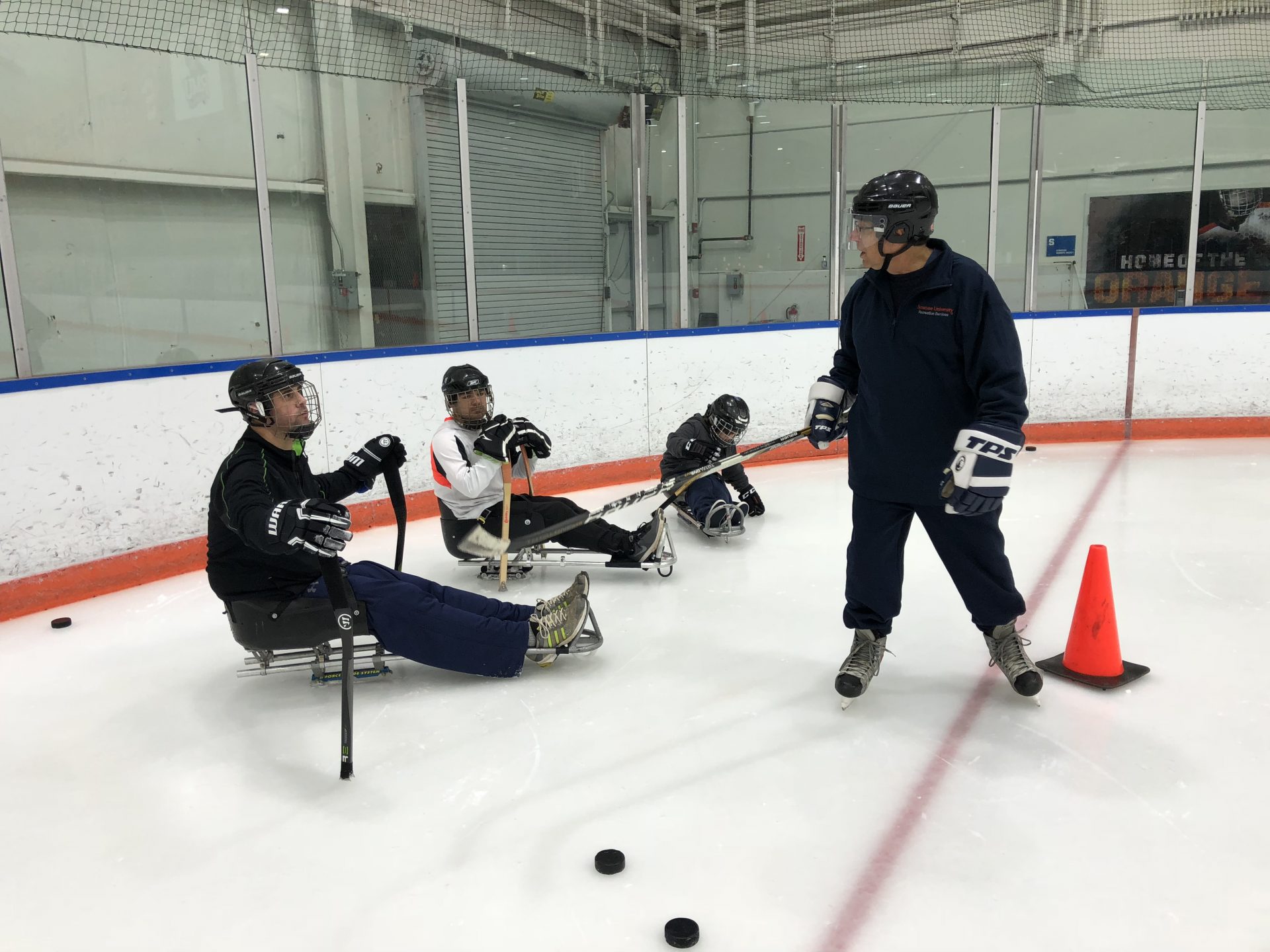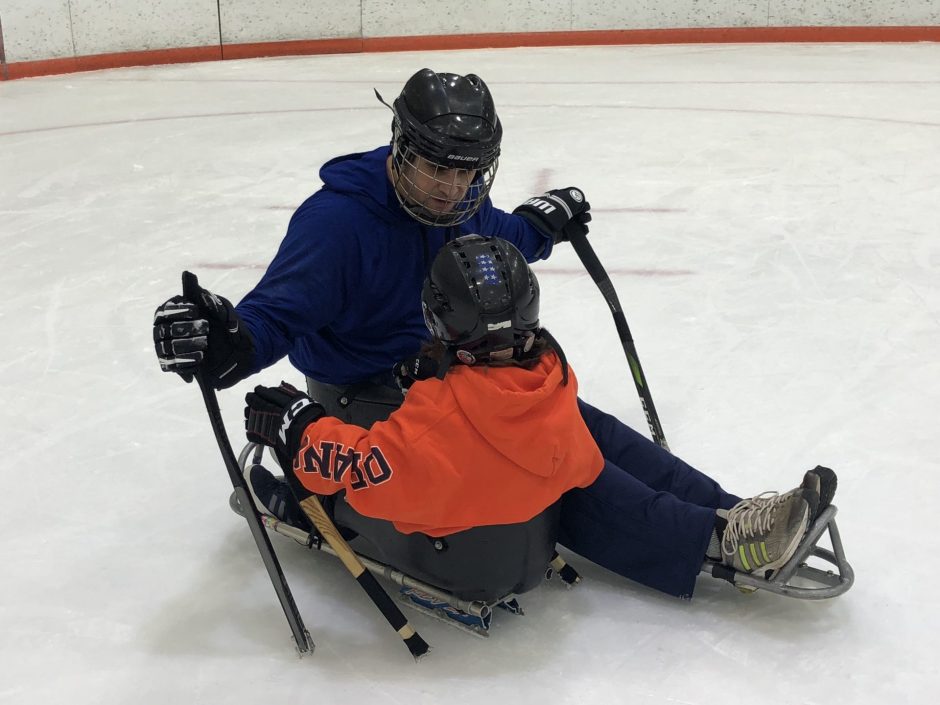Fink: It’s Thursday Night at an ice rink in Syracuse. Six hockey players sit on the benches, preparing for weekly practice. They open their bags— taking out pads, sticks and helmets.
Fink: But instead of lacing up their skates, players strap into sleds. On the ice, sled hockey players run through shooting, passing and skating drills.”
Myles Favata: “When I’m older, I want to accomplish making the U.S. national team.”
Fink: That’s Myles Favata— like any other nine year old, he has big goals. He started playing sled hockey in March— wanting a more physically demanding sport compared to other adaptive sports like power soccer. He quickly found his home on the ice. His father Jamie, right by his side.
Jamie Favata: “Sharing the experience with my son. Being able to support them. My wife and I’s goal was always to never allow him to think there was something in life he couldn’t accomplish.”
Fink: Sled Hockey is similar to stand up hockey with players following many of the same rules. This allows Myles, who has spina bifida, to get on the ice. Aaron Landers, who runs skating programs on the S-U campus, says the only difference between the two— is the equipment.
Aaron Landers: “Instead of the blades being on the bottom of your feet, the blades are on the bottom of a sled that participants sit in. As far as propelling themselves skating and such, players have two sticks instead of one, which they hold in their hands. And there’s say like a blade, a hockey blade on one end of the stick and on the other end of the stick are picks that the participants can basically push themselves in.”
Jenna Fink: Myles and his dad, Jamie, play for the C-N-Y Flyers— a team of 15 skaters that practice in Skaneateles, New York. Jamie doesn’t have a disability, but supports his son as a fellow teammate. Chuck Gridley has been coaching the team since it began in 2010.
Chuck Gridley: “There’s tremendous value. For someone who has a lower body disability, sled hockey is an attractive sport. Its fast. Its physical. You have the camaraderie of any team sport.”
Norm Page: “It’s growing all over the country and its really in every corner in the U.S. now.”
Fink: “Norm Page is the sled hockey rep for U-S-A Hockey.”
Norm Page: “San Diego, Seattle, middle of the country. Down to Alabama, Florida. The Northeast. It’s really everywhere. Well over 100 programs across the country now.”
Fink: “He’s helped start programs in 60 cities over the last 10 years. And his own connection— his son, Adam, is a three-time Paralympic gold medalist.”
Page: “Being in the stands and seeing him get a gold medal around his neck and you know the national anthem and all that is pretty wild. Pretty crazy.”
Fink: “For many families, sled hockey is more than practice and games. Page says it’s a bonding experience— A sport where people with and without disabilities can play together.”
Page: “It is very therapeutic for them to find something that gives them self-esteem, and makes them feel part of a team and have answers. That’s the other thing parents get as much out of this as the athletes.”
Fink: “Sled Hockey isn’t the easiest sport on the ice.”
Landers: “You got the picks that you’re digging in, the sleds can tear up the ice pretty good. You have to find time, you have to find people who are willing to help actually maintain the ice and fix the ice.”
Fink: “And athletes have their own struggles to overcome.”
Myles Favata: “For me, It’s getting myself up when I fall. I’ve not been able yet.”
Fink: “Getting up after falling will come with practice for Myles. Right now, he’s scoring big just being out there with his dad.”
Natural Sound
Scoring goal
Fink: “Sled hockey programs continue to grow across the country so Myles, like many others, can play hockey. He just has to do it a little bit differently. Jenna Fink, WAER News.”






